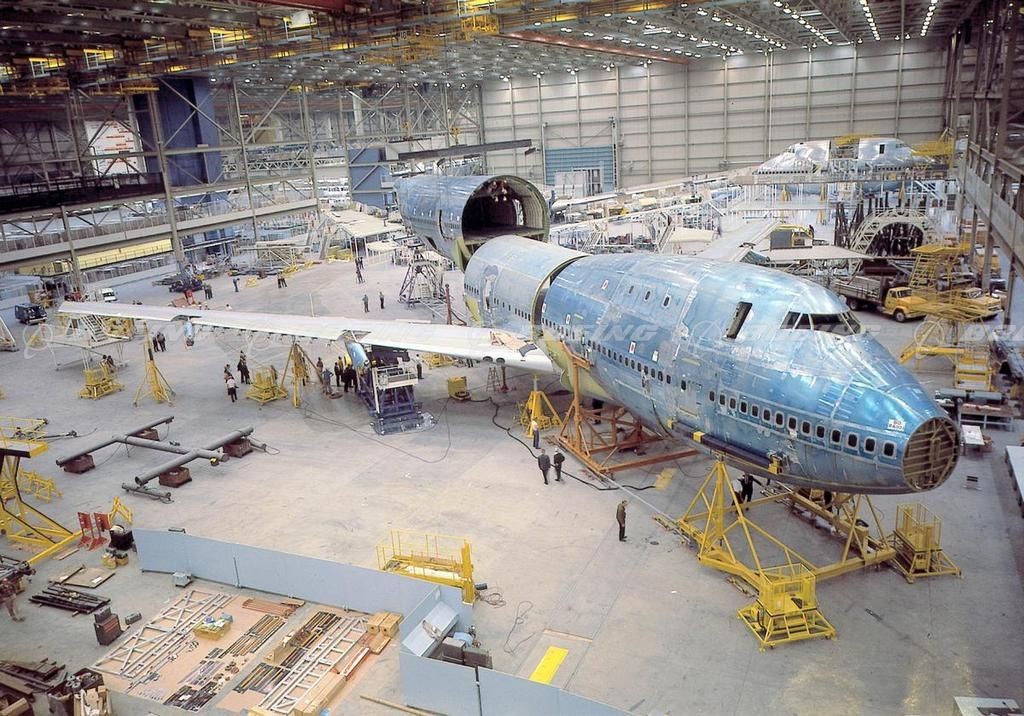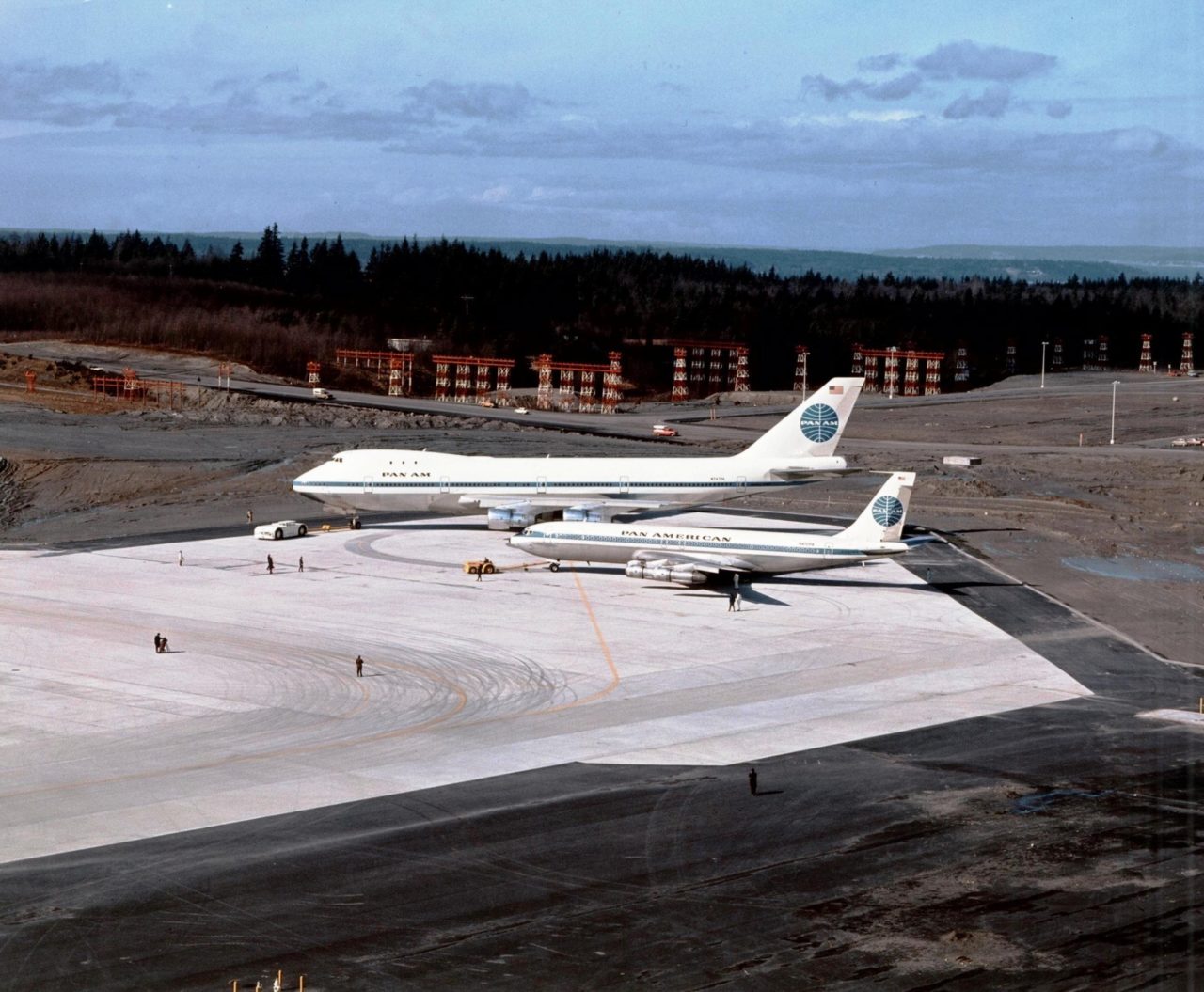Goodbyes are hard, especially when it is something or someone we love. It is hard on the one saying it, and it is hard on the once receiving the goodbye. Sitting in my kitchen having my morning coffee and reading the news, I came across a piece that was of interest. British Airways announced that they were retiring effective at once their entire fleet of Boeing 747s.
I love traveling, and aviation is a passion of mine. I feel that it has been a part of my DNA since I was a child. When I was young, my mother and I would watch planes take off from my local airport. In my teen years, I spent time studying flying and playing on flight simulators. When I was about 20, I started taking private pilot lessons. My first solo flight – pictured here was on the 1965 Cessna 175C- N8368T.
The Boeing 747 has been a staple of air travel since the 1970s. Its iconic frame has graced airport aprons around the world and has been an American icon to the triumph of engineering and the skillful art of aviation. So why do I feel so emotional about a plane? As I sat there, a twinge of sadness came over me. Knowing that it was gone, and I would never fly on one again. During my career, I have flown on the 747 many times, often taking that gateway trip into London. Over the course of those trips, I made friends with flight attendants, pilots, and pursers. I only have fond memories onboard the 747.
There was always something magical about the 747, and I would sit on those flights reminiscing of the golden age of air travel in the 1970s. When people still wore suits to fly and lounges inside the planes were still a popular item. Did you know American Airlines even installed a piano bar on their 747? The benefits are reminiscent of a simpler time, a slower time when it was about the passenger, and the journey, not the profit of the seat.
The retirement of the 747 got me thinking about change and saying goodbye. How hard it is, but also how important it is to learn how to say goodbye. Can we learn how to find joy in it? I started thinking about projects and user adoption. Leadership in many organizations finds it challenging to say goodbye often when it comes to old technologies. User adoption is the most struggled with part of any implementation, be it systems or policies. This article aims to show you some ideas that you can use from the meteoric rise to the retirement of the Boeing 747 that can help you to be more successful in your next implementation project.

The 747 brought about a massive change to the world both culturally and economically. In 1970 air travel, especially long-haul international travel was still out of reach of many. Jet travel was about six years old, with small body jets and propeller-driven planes dominating aviation. On January 22, 1970, Pan Am launched the first Boeing 747, christened the “Clipper Young America.” The launch came only a few months after its debut in Everett, Washington, at the Boeing factory. It took to skies that day on what would become a historic route from New York’s JFK to London’s Heathrow.
That flight was the first time in history that a wide-body “jumbo-jet” had entered commercial service. A person could now travel non-stop in a relatively short time to destinations around the globe. The often-overlooked benefit of the 747 was its impact not only on the aviation industry but to the entire world. The 747 ushered in a time of unprecedented growth and economic expansion, the likes of which the world had never seen before and did not see again until the internet had reached widespread adoption in the early 2000s.
The Boeing 747 Has Flown 3.5 Billion People over its 50 years.
Some economists estimate that the creation of the wide-body jetliner and, more specifically, the 747 had an estimated impact of $40T on the global economy over its 50-year service. It was the first time that we could, in a reasonable time, reach Europe and Asia. Without the 747, some theorize that the economic expansion and technological revolution in China and Japan would not have happened until much later.
What does the Boeing 747 have to do with user adoption? Think about this for a second; there had to be massive user adoption at all levels for Boeing to make this $1B bet pay off. Both in the aviation world, but also in the consumer air travel world as well. What lessons can we learn from both the rise and fall of the 747? Outlined in this article are tips. These tips are from the launch through the retirement of the 747. Using these tips, you can increase success in your projects.

Pictured Above: Boeing rolled the aircraft out of the plant during a media event featuring flight attendants from the first customer airlines. c. Dec 1969
The Criticality of User Input
Whenever a new system, technology, or even a plane comes on the scene, we need to think about the end-users. If you want it to be a success, you should always start with getting feedback from those that will be using, buying, or working on it. The 747 was not the brainchild of Boeing. It was the idea of Juan Trippe – the president of Pan Am, one of Boeing’s largest private buyers. In 1965 Trippe reached out to Bill Allen, the then-president of Boeing, and asked for a much larger airliner, bigger than the 707 – the dominant plane at the time. (Pictured Right)
We need to remember as consultants down to IT managers and decision-makers that we are not the ones that will be spending our day in the system. It is critical for a productive workforce transformation always to include input from end-users. End-user input will be the most time-consuming step; however, it is also the most important and the single most significant point of failure of a project. It helps create a solid foundation for future buy-in and trust in the program.
We know that when people actively invest in a change, there is a 30 percent chance that it is more likely to stay with them. Begin by providing users with an opportunity to supply input through workflow development workshops and user acceptance testing. User input at all phases will go miles in the success or failure of a project.

Crew Resource Management (CRM), in the aviation world, is one of the most significant changes to pilot culture that has changed safety and flying. In 1977 on the island of Tenerife, two 747s crashed into each other during takeoff. The accident at Tenerife killed 583 people. This crash is still the single most extensive loss of life in aviation history.
The cause of this crash was due to the pilot in command (PIC). At the time, the prevailing culture was that the PIC could not be countermanded. His word was gospel, and no one ever went against that. That mindset sounds like many implementation projects, it is senior leadership making all the calls, and no one has any input. After this crash, an overhaul of culture took place, and the first officer and flight engineer now have the same level of contribution to the flight as the pilot in command.
CRM has been the saving factor in hundreds of airline accidents, saving an untold number of lives. CRM is the factor that saved lives on the “Miracle on the Hudson.” The free flow of ideas and shared workloads is one factor of what makes modern flying safe. This same mentality helps projects succeed. Several team members adding their input will only help to shoulder the load. It allows teams to play to their strengths.
Make It Loud and Make It Exciting
When Boeing started the 747 project, it was a massive undertaking. The project required there to be an all hands-on deck mentality. Boeing made a bet, one which would dwarf the company for years. The 747 project even nearly bankrupted them. Had the 747 failed, Boeing would not exist today. With this, everyone from the engineers to line workers, sales reps, and marketing executives had to make this a success. The noise came in the form of one of the most extensive sales pitches ever undertaken by Boeing.
They did something unheard of at the time. Sales reps traveled all over the world. Taking the plan and even later the jet itself to the far corners of the globe, making noise, and making it loud. Getting the attention of the airlines and turning the heads of passengers was key to succeeding in this endeavor. The 747 was a $1 billion bet, and Boeing could not afford to fail. The entire fate of the company rested on this. So, at every chance they got, they made as much noise and fanfare about this as they could, generating press, holding events, and showing off the plane. Boeing’s aggressive marketing and sales approach led to an explosion of sales and growth. This growth paved the way for 50 years of continued growth and innovation. This innovation led to inventions and changes in technology that still affect our lives today.

One of the biggest mistakes that leads to the slow and painful death of a project is silence. Silence from the management team kills projects. The lack of transparent communication can stifle growth, input, and even stall out the implementation. If you do not have buy-in at the management level, and therefore do not have communication downward, the project is doomed before it ever gets off the runway.
You need to generate much hype for the new tech you are implementing. You want people to adopt technology at your organization. You want to make them as excited about it as the latest smartphone launch. You should enlist the help of your marketing and PR people to build an aura of expectation and plan a fun event. To ensure your event leaves them wanting more, take a page from the 747 launches and:
- Everyone stops work and attend the event in person and via video conference
- Invite company leaders to share how the new tech will affect people in their department
- Show employees real-life examples of how the new tech makes their life better and faster
Make Supporting and Training a 5 Star Experience for Everyone
Boeing has had much success in airline safety and many failures. We are aware of every one of Boeing’s failures due to the tragic loss of life. However, they have worked the majority of their 104-year history to create safe and reliable planes. Their safety comes from the hundreds of hours of safety and technical training. This training starts at the assembly line workers and maintenance crews through the flight attendant and pilot training programs. Creating a 5-star training and support experience is the same approach we need to be taking with our projects. This approach should be coming from both the consulting and management teams.
The second biggest failure point of any project is not the technology, and it is not the rollout – it is the training and support post-go-live of the project. If you do not take the time to give everyone on the team a five-star experience, your project will fail. You need to look at this as a major fail point. Think of this as no person left behind.

If your management team or your consultant does not put much effort or stress on this point – you should have a major red flag going up. You, your team, or your consultants should be driving this as a significant key to your implementation.
Even if the technology you are introducing is very intuitive, different departments will use it in different ways. Sharing training and successful use cases between departments will aid the speed of adoption and training. Success is contagious, and when you share the success one department has had using new technology, you increase the potential ROI from your implementation. Success in the project begins to inspire others to use it in new ways. Next time you introduce new technologies at your office, you can fuel its adoption momentum through a variety of training modules, including:
- Host lunch-n-learns that provide employees with top user tips and a relaxed atmosphere for a Q&A session
- Create training sessions, boot camps, and video training to give them a place to go to find the details they need. (Think of it like the QRH [Quick Reference Handbook] in the 747)
- Create Super Users – these are people in your organization that have expert knowledge of the system and can help your end-users and management.
Creating a Culture of Goodbye
One thing that Boeing did well over the last 50 years was learning that you cannot live off one success. Furthermore, even one success has its time limit. Boeing has been phasing out the 747 from the time that it first took off. The engineering team is focusing on building, faster, lighter, and safer materials that make jets go farther, faster, and more efficiently. Boeing has a culture of goodbye. Apple, Microsoft, and Amazon – are just a few other successful companies that have a culture of goodbye. Goodbye is not always a bad thing; it is what should drive us. Goodbye to the old way of thinking, goodbye to the old way of doing. Let us strive to find a newer, faster, and more efficient way of doing things.
The end of the 747 is sad from a nostalgic perspective. I wish that I had the chance to fly with my son to Europe on the 747. However, the creation of the Boeing 787 Dreamliner means that we can continue to run using far fewer fossil fuels which reduce carbon emissions. This reduction means that we can keep flying for many more years to come. We need to be looking from day one what we can say goodbye to, how can we make it better, how can we adapt and be more agile.
Finally, how do we foster a culture of goodbye? If you are always thinking about ways to move forward and say goodbye to the old, your teams will be more likely to adopt new ideas, technologies and even help push the company to a culture of goodbye. You can try incentives as a user adoption strategy. Rewarding new ideas and incentivizing performance is always an excellent method for driving user adoption.
Reports show that employee incentive programs typically increase the frequency of the behaviors they reward by 22 percent. Rewards are best with a little friendly competition. Whether you pit entire departments against one another or allow people to compete as individuals, you will want to set incremental, measurable goals, this is called “gamification”. Gamification ensures the adoption process continues after the user has received each reward, and will enable people to move up in their level of adoption.

Is it time to say goodbye?
The “Queen of the Skies” will sail off into the sunset as a cultural icon of a past era in air travel. Its life is now to serve as a freighter. The 747 will continue to expand global commerce as trade further increases, and new routes are added. If there is one thing that you can take away from this article, it is that you should be striving for a culture of goodbye in your organization. Goodbye is hard, but it the more you say it, the more exciting it will become. We should all be saying goodbye to the mentality that because “we have done it that way for the last 20 years” means we should do it that way for another 20. Goodbye to the technical debt that we have carried through the previous four CTO’s. Goodbye to the idea that your front-line workers and end-users cannot contribute to system implementations. It is time to say goodbye!
From our experience, those organizations that have followed these tips outlined have been wildly successful in overhauling their culture as well as have the greatest success in implementations. If you are working to make the next world-revolutionizing airliner or you are looking to have overwhelming success in your next project. Start by saying goodbye!
Dynamic Consultants Group’s focus on scalable Microsoft system implementations enables and supports clients around the world through offices in Europe, India, and the United States. Help with your project is closer than you think. Learn more or schedule a meeting at https://dynamicconsultantsgroup.com/schedule-a-meeting/







